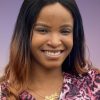Creating e-books – what to remember

In the era of content marketing, no one doubts that creating e-books is a profitable idea. This way, you can quickly build a professional brand image and encourage readers to take advantage of your offer. Therefore, it is worth knowing how to properly write e-books in order to put this information into practice. So let’s get started!
Planning an e-book
First of all, you should consider what the main marketing goal of the e-book is. This may be, for example, promoting a specific service or product, collecting e-mail addresses for a newsletter or simply strengthening the brand so that recipients perceive the company as an expert. Each of these goals will differ in the nature of the content, length and information provided.
For example, acquiring addresses for e-mail marketing requires developing a ‘reading book’ that will be of interest to a large group of readers. In turn, image building is the result of specialized, industry-specific information, which is never very popular. Their target effect is completely different and involves creating internal conviction among potential customers to make a purchase instead of going to the competition.
It is worth specifying precisely who will read the book and why.
With this information, we can move on to the practical stage of creating an e-book.
Writing e-books – tips
It’s time to discuss the most important features of professional e-books.
Make sure your language is simple and easy-to-understand
This is an important element regardless of the intended marketing goal. Using too complicated vocabulary will not have a positive impact on the tone of the content, on the contrary – it may only discourage readers from reading further.
As proof, you can simply cite authentic e-book reviews. Positive opinions almost always mean that the text was interesting, clear, factual, logical and understandable. However, there is no praise for the expert terminology used by the author. It’s easy to see that it’s exactly the opposite – most negative reviews treat the text as ‘boring and too difficult’. Using professional nomenclature without providing additional explanations will certainly not contribute to reader satisfaction.
Keep your structure clear
What matters is not only the content of the argument, but also its form. We can assume a simple axiom here: people don’t like reading long blocks of text. They are perceived as tiring and monotonous.
What is currently used in writing e-books?
- Honorable Mentions
- Quotations
- Italics
- Colors
- Bold
- Bulleted lists
…and other possible formatting. This approach will allow you to give the content an attractive form, generating many benefits. Appropriate structure makes it easier to remember information, highlights the most important messages and increases the expressiveness of the language.
This is an important element regardless of the intended marketing goal. Using too complicated vocabulary will not have a positive impact on the tone of the content, on the contrary – it may only discourage readers from reading further.
As proof, you can simply cite authentic e-book reviews. Positive opinions almost always mean that the text was interesting, clear, factual, logical and understandable. However, there is no praise for the expert terminology used by the author. It’s easy to see that it’s exactly the opposite – most negative reviews treat the text as “boring and too difficult.” Using professional nomenclature without providing additional explanations will certainly not contribute to reader satisfaction.
You should remember this when writing an e-book.
If it is necessary to list several stages of a given activity, it is worth formulating the text in such a way as to present it in the form of a numbered list.
Don’t forget to include your sources
The e-book is characterized by a comprehensive form that facilitates drawing numerous conclusions. Referring to specific data creates a requirement for a reliable author to include the sources of this information.
The time when talking about the author’s observations was the only possible form of presenting facts. Today, the scientific legacy is richer by several orders of magnitude, and every advance is the result of past research. It is worth remembering this when citing sources when formulating your own conclusions.
To sum up, scientific standards, which also apply to substantive e-books, oblige the inclusion of bibliographies. This has an impact on the author’s image and the credibility of the created text.
Summary
- An understandable message, clear information architecture and a rich bibliography are universal features of professional e-books. It is worth implementing them in the content to achieve optimal sales and image effects.
- The marketing effectiveness of content also depends on whether the message is tailored to the intended business goal. Before writing an e-book, you should specify the target group and expected results.
- In the above article, we presented the most important tips for writing an e-book, but developing a good text is only a component of success. In addition, you should ensure attractive graphics, an appropriate distribution strategy and a detailed market analysis to determine potential demand.

















Leave a Reply